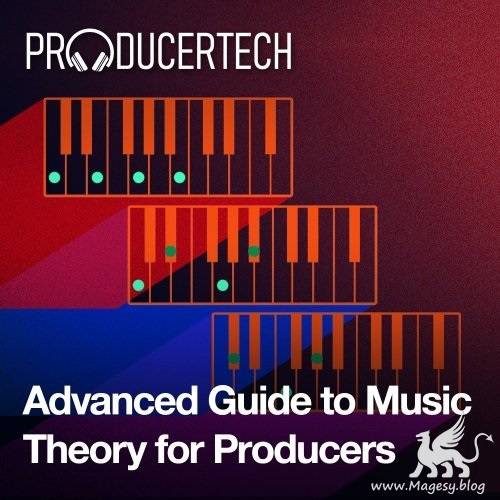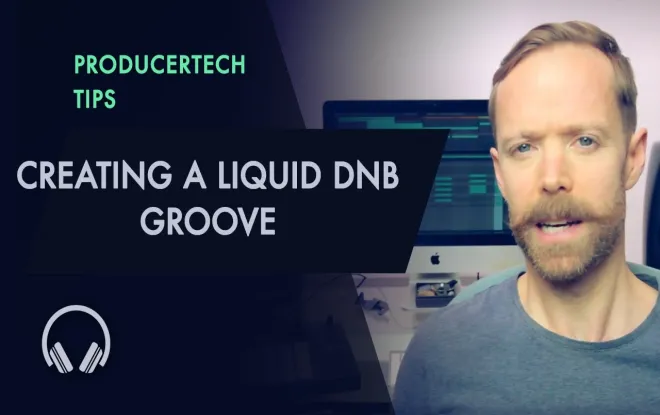
Advanced Guide To Music Theory
FANTASTiC | 10 May 2020 | 1.21 GB
Following on from the success of the Beginner’s Guide to Music Theory for Producers, this Advanced Guide promises to expand your knowledge of music theory to greatly assist in the creation of more musical tracks. Whatever your level of music theory, there are tonnes of useful techniques and workflows for working both with a keyboard and purely in the DAW, all demonstrated in the production of various popular genres like Hip Hop, House, DnB and Trap. The course begins with a summary of the Beginner’s Course, showing how to create melodic accompaniment and chords to go with a jazzy break, before moving onto the first advanced topic of modulation, meaning moving to a different key, starting off with the relative major and minor. There is also a thorough look at diatonic triad harmonies, covering the ways that triads change when shifted to different positions in the scale, and how this affects the mood of a song. A funky organ phrase is then put together with a House beat, which moves through a series of regular and inverted triads to create a catchy hook.
Module 1 – Basics Recap – Working with a Jazzy Break
Rob works through all of the subjects covered on the Beginner’s course by first analysing the melodic content in a bassline, to figure out the key of the track, and then showing many different examples of monophonic and polyphonic accompaniment to go with it.
Lesson 1 – Finding the Key – 9.59
Lesson 2 – Creating Melodic Accompaniment – 14.23Module 2 – Related Major and Minor Keys
An intro to related keys, starting with the simplest, the relative major or minor. After explaining what it is, Rob shows how it works in a breakbeat track, demonstrating the changes that a melodic phrase needs to make in order to work with the new harmony. 10.43Module 3 – Advanced Chords I – Working with Triads
This first chords module is a detailed exploration of the ways in which diatonic triads present themselves in a major and minor scale, providing a wealth of knowledge about which ones to use when creating triad chord progressions.
Lesson 1 – Minor Scale Triads – 8.38
Lesson 2 – Major Scale Triads & Roman Numerals – 8.58
Lesson 3 – Triad Chord Progressions in a Minor Key – 7.32
Lesson 4 – Triads following the Bass – 5.30Module 4 – More Related Keys
Rob moves on to additional common keys to modulate to when producing, beginning with the dominant. This is shown in a number of examples, with one being the creation of a breakdown in a House track, and the others a range of compositions that utilise a ‘cycle of fifths’ technique.
Lesson 1 – The Dominant – 10.42
Lesson 2 – Circle of Fifths – 12.01Module 5 – i-iv-VI Progression – Liquid DnB Groove
A guide to creating melodic content around a bassline, playing a i-iv-VI pattern of notes. Basslines and triads are recorded into a project and then edit, with an additional descending melody played in on top. 10.22Module 6 – Advanced Chords II
This second chords module expands the palette further with richer and more interesting chords like 7th and 9ths, both of which are used to form chord progressions in grooves, with one played in and edited and the other drawn in entirely with the mouse.
Lesson 1 – 7ths/9ths/11ths/13ths – Major 7 Chill Trap Groove – 10.53
Lesson 2 – Minor 9 Hip Hop Groove – 9.53Module 7 – Advanced Scales
Rob explains the principles that govern some of the most popular additional scales, beginning with a reminder of major and minor, before working through popular modes, chromatic, pentatonic and wholetone scales. He then shows an example workflow for choosing a scale based on note selection in the piano roll, then using that template as a basis for the harmony in a project, from which other melodic parts can be made.
Lesson 1 – Modes
Lesson 2 – Chromatic Scale and Accidentals
Lesson 3 – Scale Selection DAW WorkflowOutro

INFO/DEMO/BUY: https://mage.si/d4XW
Advanced Guide To Music Theory TUTORiAL
https://beelink.pro/41795/Advanced-Guide-To-Music-Theory-TUTORiAL.html
2413 ViewsRelated Post:
Categories:



